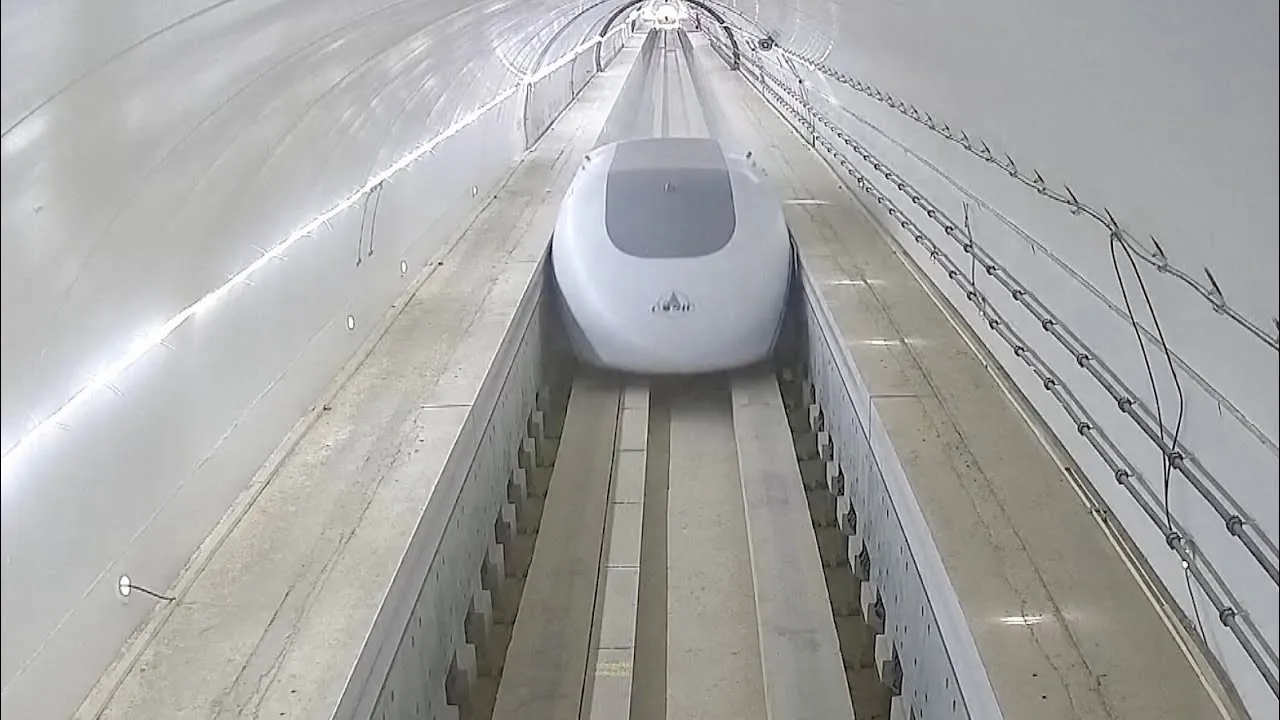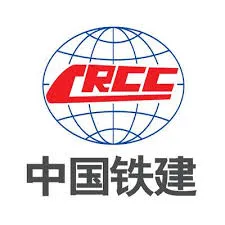
CRCC Unveils High-Speed Maglev Tech at Sci-Fi Conference
CRCC (China Railway Construction Corporation) has established itself as a global leader in the development and advancement of maglev (magnetic levitation) technology, positioning the company at the cutting edge of high-speed rail innovation. The company’s extensive involvement with maglev technology spans decades and encompasses a range of major projects, groundbreaking research, and cutting-edge infrastructure that are helping to shape the future of high-speed transportation.
From the early days of maglev research to present-day high-speed systems, CRCC has continuously driven innovation in this field. The company’s work has included some of China’s most prominent maglev projects, from the operational Shanghai Maglev Train, the world’s first commercial high-speed maglev service, to more recent developments in Changsha and Qingyuan. These systems have set the standard for speed, efficiency, and safety in the maglev industry, transforming transportation networks within major cities.
One of the key factors behind CRCC’s success in maglev technology is its robust investment in research and development. The company has invested heavily in various testing and research platforms to refine its technologies, ensuring that they are at the forefront of industry standards. Among these platforms is the Qingdao high-speed maglev test platform, which serves as a cutting-edge facility for testing high-speed maglev trains at speeds up to 600 km/h. Another critical piece of infrastructure is the Changchun high-temperature superconducting maglev test system, which explores new possibilities in magnetic levitation by utilizing advanced superconducting materials for ultra-efficient levitation and propulsion. This system marks a significant leap in levitation technology and is an example of CRCC’s forward-thinking approach to maglev development.
In addition to these test systems, CRCC has also developed a multi-modal transportation network simulation platform in Chengdu. This platform is designed to study the integration of maglev systems with other modes of transportation, including high-speed rail and air travel. By simulating the interaction between various forms of transport, CRCC aims to optimize the overall efficiency of transportation networks and ensure seamless connectivity between urban centers. This approach to multi-modal integration represents the company’s vision of a comprehensive, efficient transportation system that connects cities in a way that is faster, more sustainable, and more accessible.

CRCC’s involvement with maglev technology dates back to the 1990s when the company began conducting parallel research on both maglev systems and conventional wheel-rail solutions for the Beijing-Shanghai high-speed rail corridor. This early focus on maglev research allowed CRCC to develop a deep understanding of the technology’s potential and limitations, laying the groundwork for subsequent breakthroughs in maglev train systems. Over the years, CRCC has continued to push the boundaries of what is possible with maglev, conducting extensive R&D and securing over 500 patents related to maglev technology. This portfolio of intellectual property highlights the company’s leadership in the field and underscores its commitment to pioneering advancements that will shape the future of transportation.
The most recent milestone in CRCC’s maglev development is the completion of its engineering applications for the 600 km/h high-speed maglev train system. This system represents the pinnacle of CRCC’s maglev research and development efforts, incorporating advanced technologies that allow trains to reach unprecedented speeds. The 600 km/h maglev system is expected to revolutionize long-distance travel in China by dramatically reducing travel times between major cities. For example, the travel time between Beijing and Shanghai, which currently takes around 4.5 hours by high-speed rail, could be reduced to just 2.5 hours with the 600 km/h maglev train. This would provide a significant improvement in travel efficiency, allowing passengers to reach their destinations faster, while also boosting the overall productivity of the national transportation network.
The impact of this high-speed maglev technology extends beyond individual travel times. Projections show that the introduction of 600 km/h maglev trains could create a four-hour connectivity window within urban clusters that span up to 2,000 kilometers. This connectivity would enable people to travel between major cities in a fraction of the time it currently takes, fostering greater economic integration and promoting cross-regional cooperation. Such rapid connectivity is expected to facilitate the development of the National 1-2-3 Travel Circle, a strategic initiative aimed at enhancing the efficiency of China’s transportation system by providing one-hour travel within urban areas, two-hour travel between city clusters, and three-hour travel across major regions. This initiative is part of China’s broader goal to create a more interconnected and efficient transportation network, driving economic growth and improving access to opportunities for people across the country.
The introduction of high-speed maglev trains is also expected to have a profound impact on China’s regional economic development. By improving connectivity between cities, maglev trains will facilitate the movement of goods, services, and people, stimulating economic activity and fostering closer cooperation between urban centers. In particular, the 600 km/h maglev technology is expected to unlock new economic opportunities by connecting previously distant regions and enabling more efficient business operations. This improved connectivity will not only benefit major metropolitan areas but also help to bridge the economic gap between urban and rural regions, contributing to more balanced and inclusive growth.
In addition to its economic benefits, the high-speed maglev system is also a key enabler of China’s sustainability goals. Maglev trains, compared to traditional high-speed rail systems, offer a more energy-efficient and environmentally friendly alternative. By utilizing electromagnetic forces to levitate and propel the trains, maglev technology eliminates the need for traditional rail friction, resulting in less wear and tear on the tracks and reducing energy consumption. The technology also has a lower environmental impact due to the reduced need for infrastructure development, as maglev systems can be integrated into existing urban areas with minimal disruption. Furthermore, the high-speed maglev trains are expected to produce fewer carbon emissions than other forms of transportation, making them a key component in China’s efforts to achieve its carbon-neutral goals.
As CRCC continues to refine and expand its high-speed maglev technology, the company is also exploring opportunities for international collaboration. With its proven expertise and technological advancements, CRCC is well-positioned to help other countries develop their own high-speed maglev systems. By sharing its knowledge and experience, CRCC aims to promote the global adoption of maglev technology and contribute to the development of more sustainable and efficient transportation systems worldwide.




